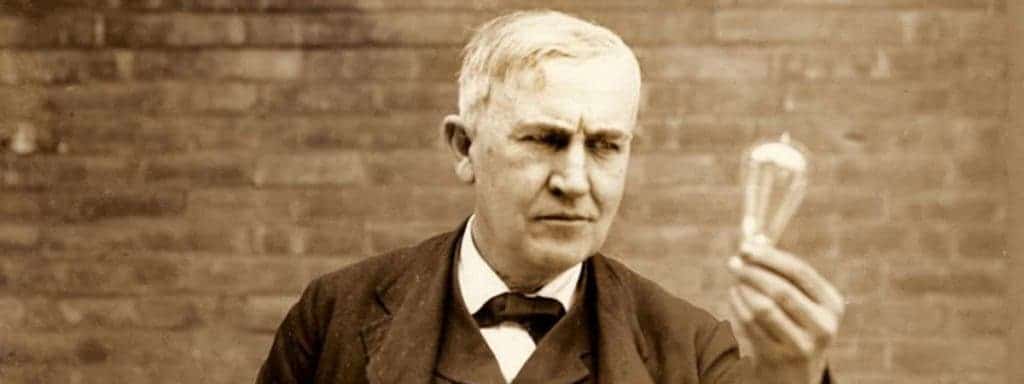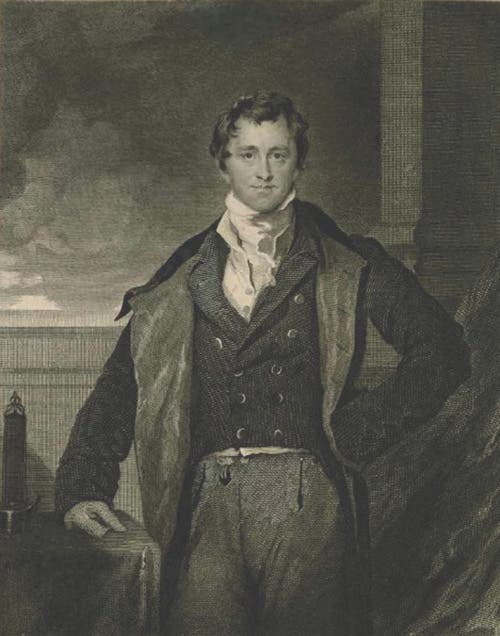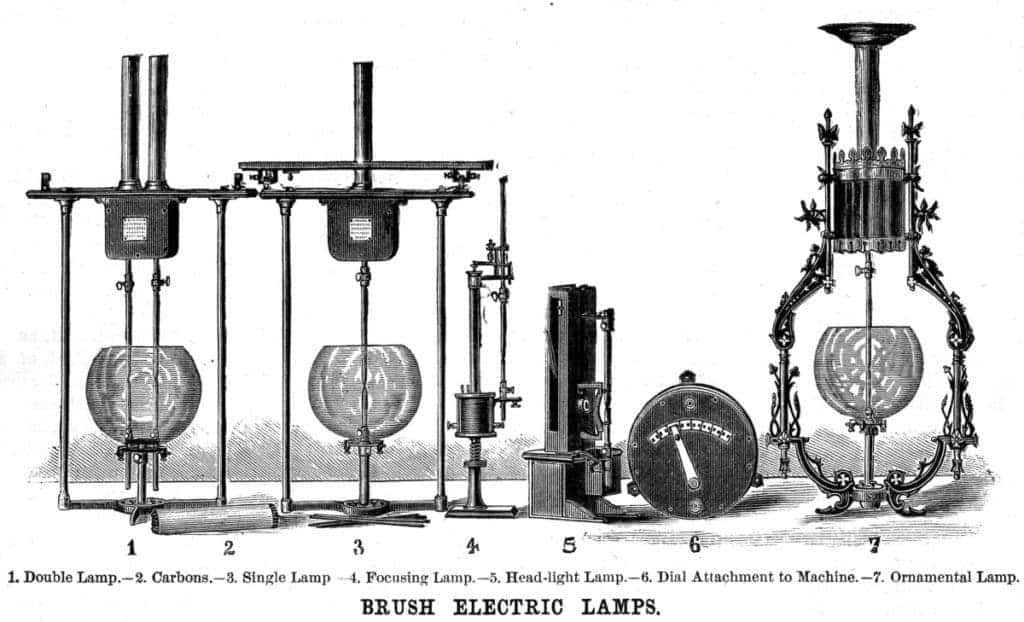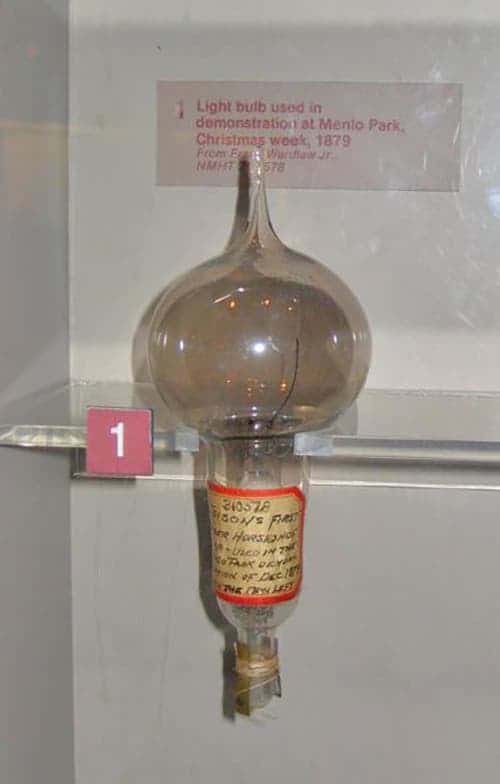
American inventor Thomas Edison is credited with devising the first practical light bulb in 1879. However, the story of the incandescent light bulb is not that straightforward, as it involved multiple scientists, who each made their contribution that eventually led to Edison’s crowning achievement: an affordable, durable, and safe incandescent lightbulb that could generate light for many hours.
The flickering history of electric lighting

In order to find the origins the lightbulb, we need to travel back in time more than 200 years to the lab of Humphry Davy, a prolific English chemist and inventor. In the year 1800, Davy attached two wires to a battery and two charcoal sticks at the other end, producing a bright arc of light between the charcoal electrodes. This lead to the electric arc lamp — the first widely-used type of electric light and the first commercially successful form of an electric lamp.
Various inventors then improved Davy’s design adding spring systems and better electrical sources.
Electric arc lamps were fashionable for decades due to their high brightness capable of lighting huge factory interiors or entire streets. For much of the XIXth century, these were the only type of electric light available to light large areas, and were often the cheapest option to illuminate streets compared to gas or oil lamps. However, the carbon rods had to be replaced so often that it turned into a full-time job. What’s more, the lamps produced dangerous UV radiation, produced noise and flickering as the light burned, and were a serious fire hazard. Many buildings like theaters burned down as a result of the excessive heat and sparks produced by electric arc lamps. And while these lamps were suitable for streets and huge halls, they were totally impractical to light homes and small enclosures, meaning that the mass market had no access to electric lighting.
The world needed better lighting technology and many inventors were hard at work to find the ideal solution. Fame and riches were surely promised to those who would succeed. But the path proved riddled with many challenges.
in 1840, British physicist Warren de la Rue proposed a new light bulb design that involved running a platinum coil inside an evacuated tube in order to minimize exposure to oxygen. However, the high cost of platinum prevented this design from gaining any commercial success. In 1841, Frederick de Moleyens submitted the first patent for an incandescent light in a vacuum bulb.

Then, in 1850, Sir Joseph Wilson Swan began working on a light bulb using carbonized paper filaments instead of platinum in an evacuated glass bulb. By 1860, the British inventor obtained a patent of a partial vacuum, carbon filament incandescent lamp. The problem with this device was that it lacked enough vacuum and an adequate electrical source, resulting in an inefficient bulb that burned out too quickly for any practical use.
Later, Joseph Swan made some improvements. First, he worked with carbon paper filament but found that these burned up quickly. Finally, in 1878, Swan demonstrated a new electric lamp in Newcastle, England, that used a carbon filament derived from cotton. Swan’s electric lightbulb could last for 13.5 hours and his home became the first house in the world to be illuminated by electric light. In November 1880, Swan obtained a British Patent 4933 for his invention.
American inventor and businessman Thomas Edison was following these developments closely. He realized that the main problem with Swan’s initial design was his use of a thick carbon filament. Edison believed it should be thin and with high electrical resistance. Edison, who adapted designs from an 1875 patent he purchased from inventors Henry Woodward, and Matthew Evans, demonstrated his incandescent light bulb in December 1879, which could last for 40 hours. Edison’s use of thinner filaments and better vacuum gave him the upper hand in the race. He then sued Swan for patent infringement.

By 1880, Edison’s bulbs lasted 1,200 hours and were reliable enough to become marketable to the public. However, this breakthrough required the rigorous testing of more than 3,000 designs for bulbs between 1878 and 1880. What’s more, Edison engineers at Menlo Park tested more than 6,000 plants to determine which type of carbon would burn the longest, finally settling for a carbonized bamboo filament. Most modern incandescent light bulbs now use tungsten filaments.
Later, Edison’s researchers incrementally improved the design and manufacturing of the filaments. In the early 20th century, Edison’s team introduced treatments for filaments that stopped the darkening of the insides of the glass bulbs.
Unfortunately for Edison, Swan’s patent proved to be a strong claim — at least in the United Kingdom. Eventually, the two joined forces and incorporated Edison-Swan United, which would go on to become the world’s largest manufacturer of light bulbs.
In 1880, Edison also founded the Edison Electric Illuminating Company in New York, with J.P. Morgan offering financial backup. This company built the first electrical generating stations that would power the newly patented light bulbs. Edison Electric would later merge with the companies of two other inventors, William Sawyer and Albon Man, to form General Electric, which is one of the world’s largest corporations to this day.
Bottom line: Edison was not the first inventor to work on light bulbs. In fact, by the time he had started working on his first designs, the light bulb had been around for some time, with around 20 different inventors around the world drafting patents for one. Edison’s design was just the most practical, which explains its worldwide success.


